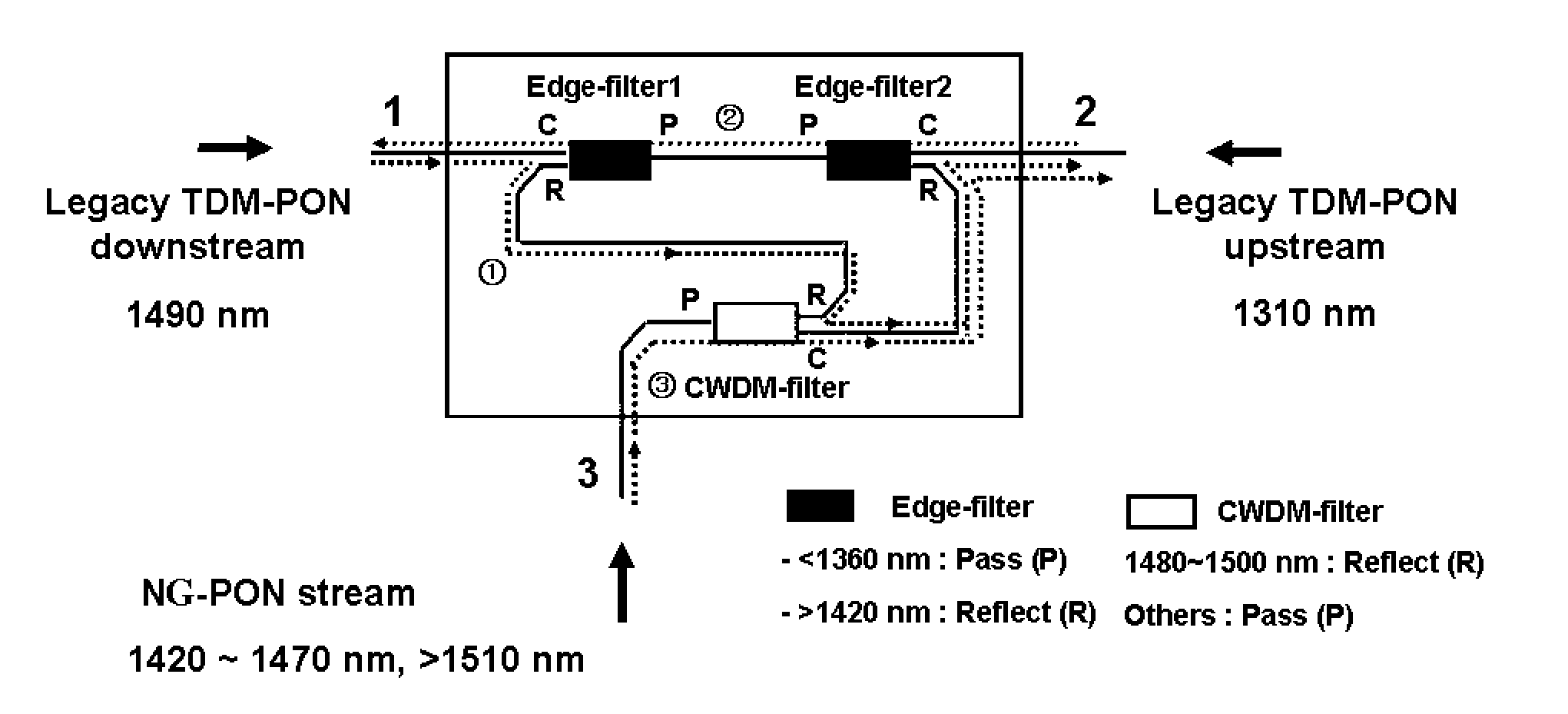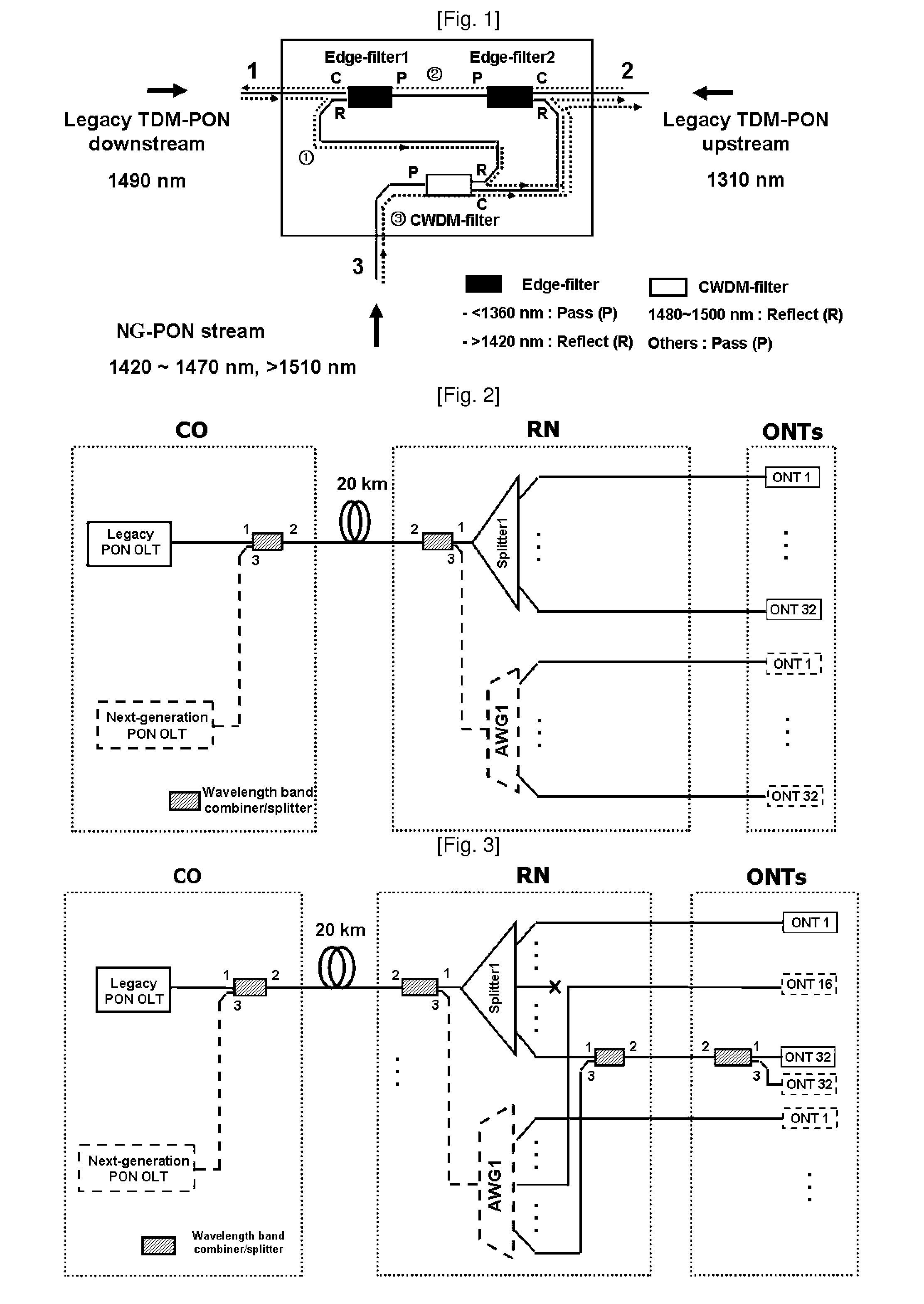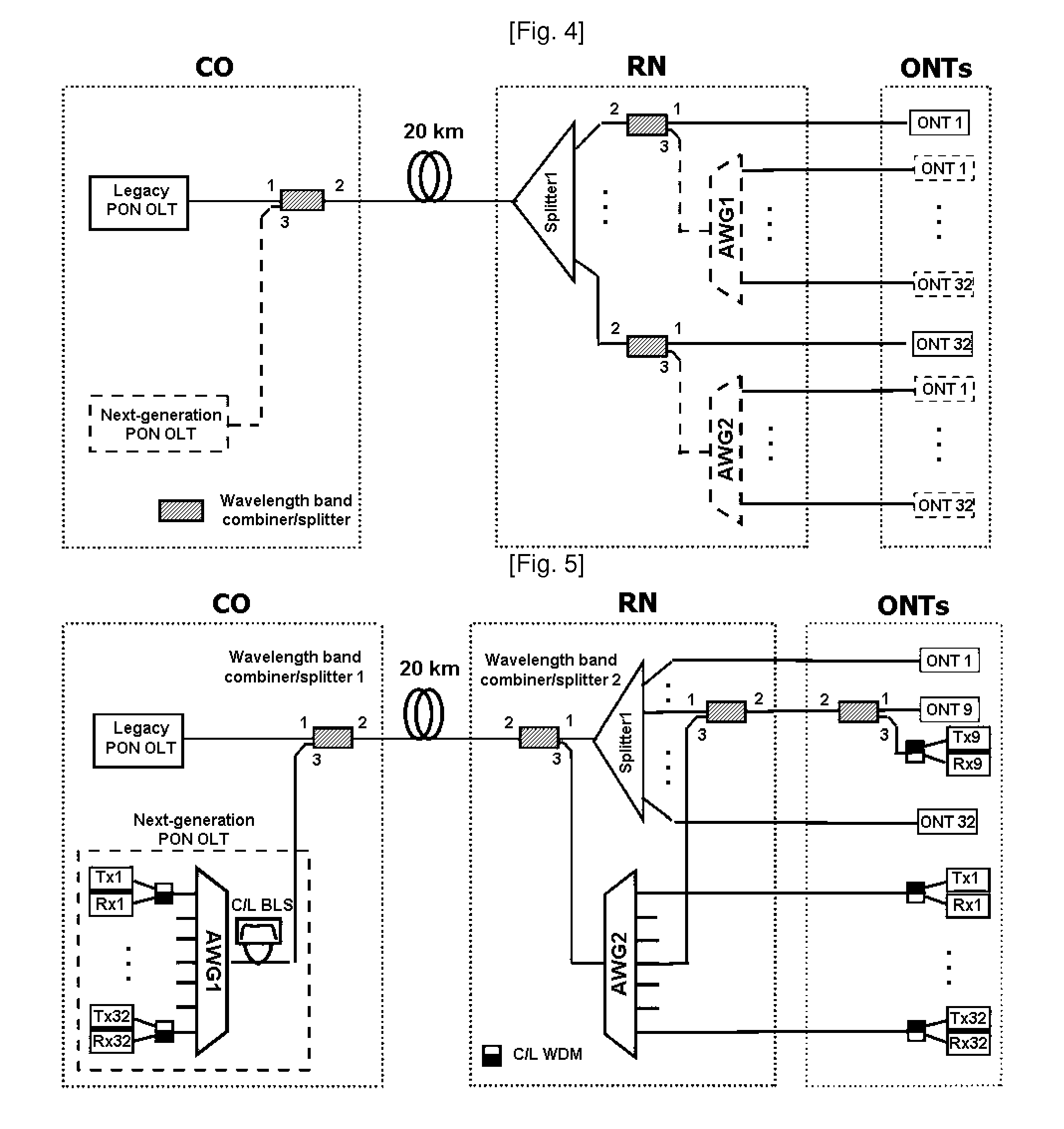Method and network architecture for upgrading legacy passive optical network to wavelength division multiplexing passive optical network based next-generation passive optical network
a network architecture and wavelength division multiplexing technology, applied in the field of network architecture for upgrading legacy passive optical networks to wavelength division multiplexing passive optical networks based next-generation passive optical networks, can solve problems such as limited bandwidth, and achieve the effects of increasing the number of subscribers, expanding bandwidth, and low cos
- Summary
- Abstract
- Description
- Claims
- Application Information
AI Technical Summary
Benefits of technology
Problems solved by technology
Method used
Image
Examples
Embodiment Construction
[0034]Hereinafter, structures and functions of preferred embodiments in accordance with the present invention are described in more detail with reference to the appended drawings.
[0035]It is required to increase of the number of subscribers or to provide a higher bandwidth by installing a new network additionally while using a currently used optical fiber and a currently used splitter, in order to upgrade a legacy TDM-PON based PON to a next-generation PON.
[0036]FIG. 1 illustrates an apparatus for combining and splitting wavelength bands which is used for upgrading a TDM-PON to a next-generation PON.
[0037]Referring to FIG. 1, a method and a network architecture for upgrading a legacy passive optical network to a next-generation PON according to the present invention employs an apparatus for combining and splitting wavelength bands having three input and output ports as illustrated in FIG. 1, which inputs or splits signals having wavelength bands being used in a next-generation PON s...
PUM
 Login to View More
Login to View More Abstract
Description
Claims
Application Information
 Login to View More
Login to View More - R&D
- Intellectual Property
- Life Sciences
- Materials
- Tech Scout
- Unparalleled Data Quality
- Higher Quality Content
- 60% Fewer Hallucinations
Browse by: Latest US Patents, China's latest patents, Technical Efficacy Thesaurus, Application Domain, Technology Topic, Popular Technical Reports.
© 2025 PatSnap. All rights reserved.Legal|Privacy policy|Modern Slavery Act Transparency Statement|Sitemap|About US| Contact US: help@patsnap.com



